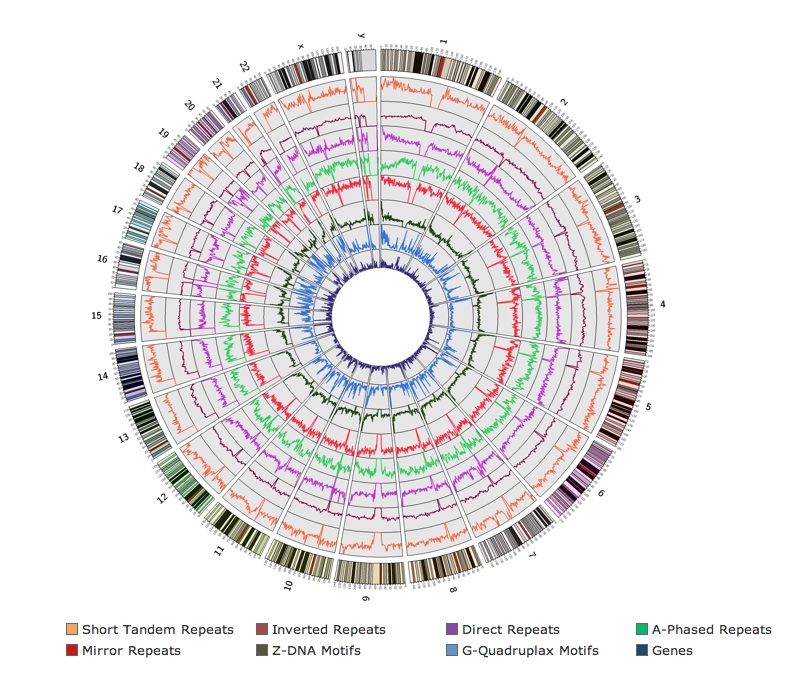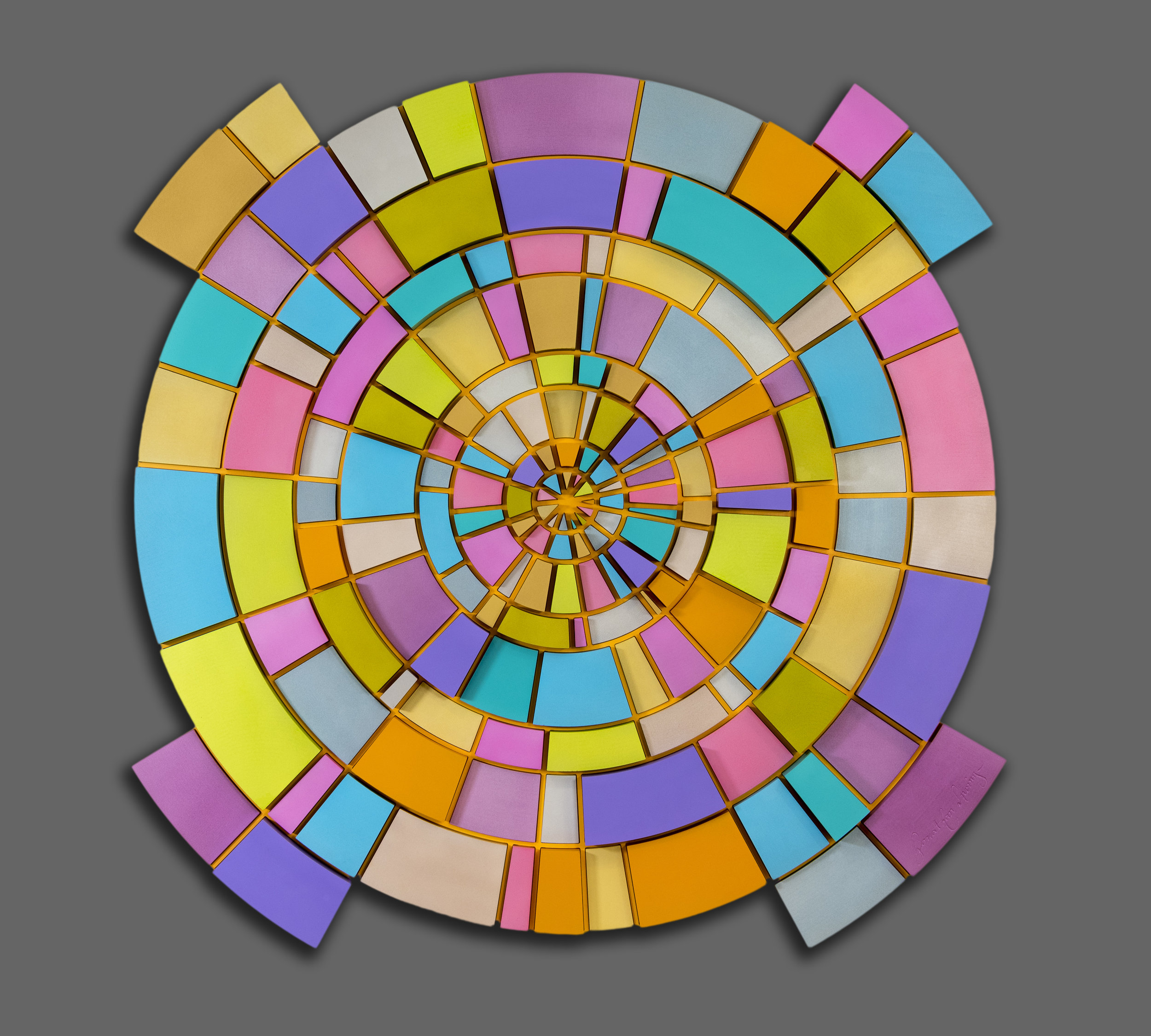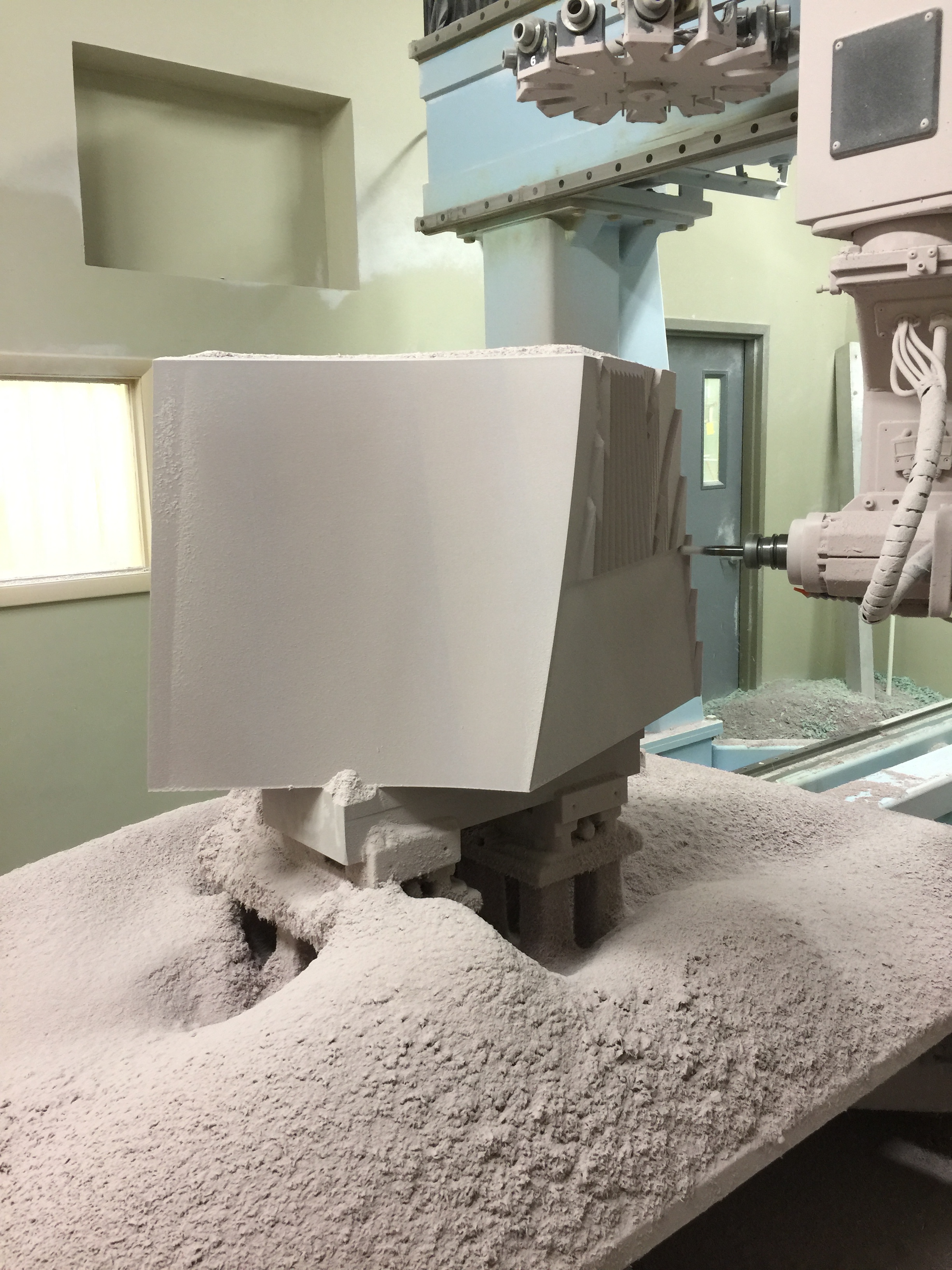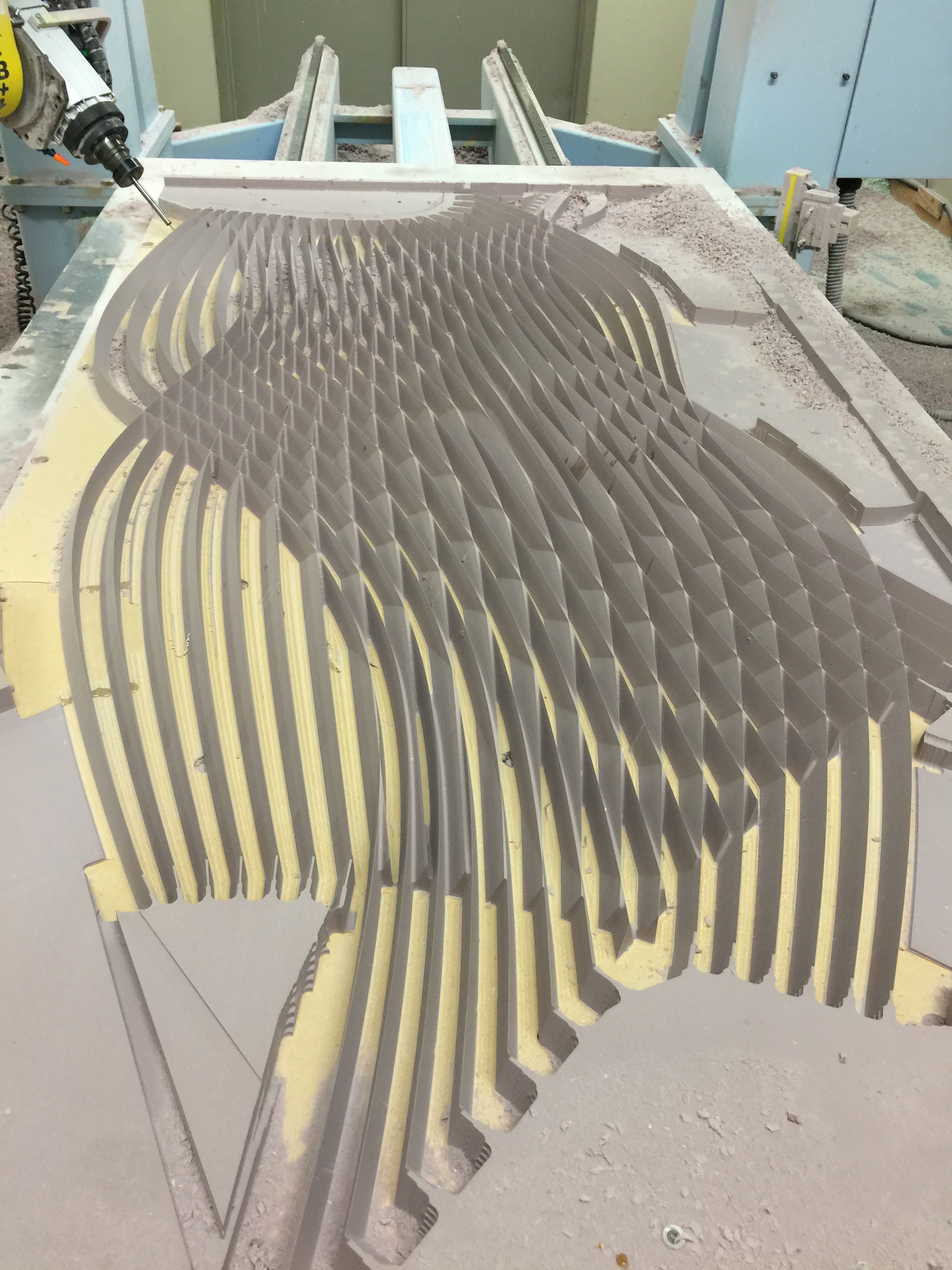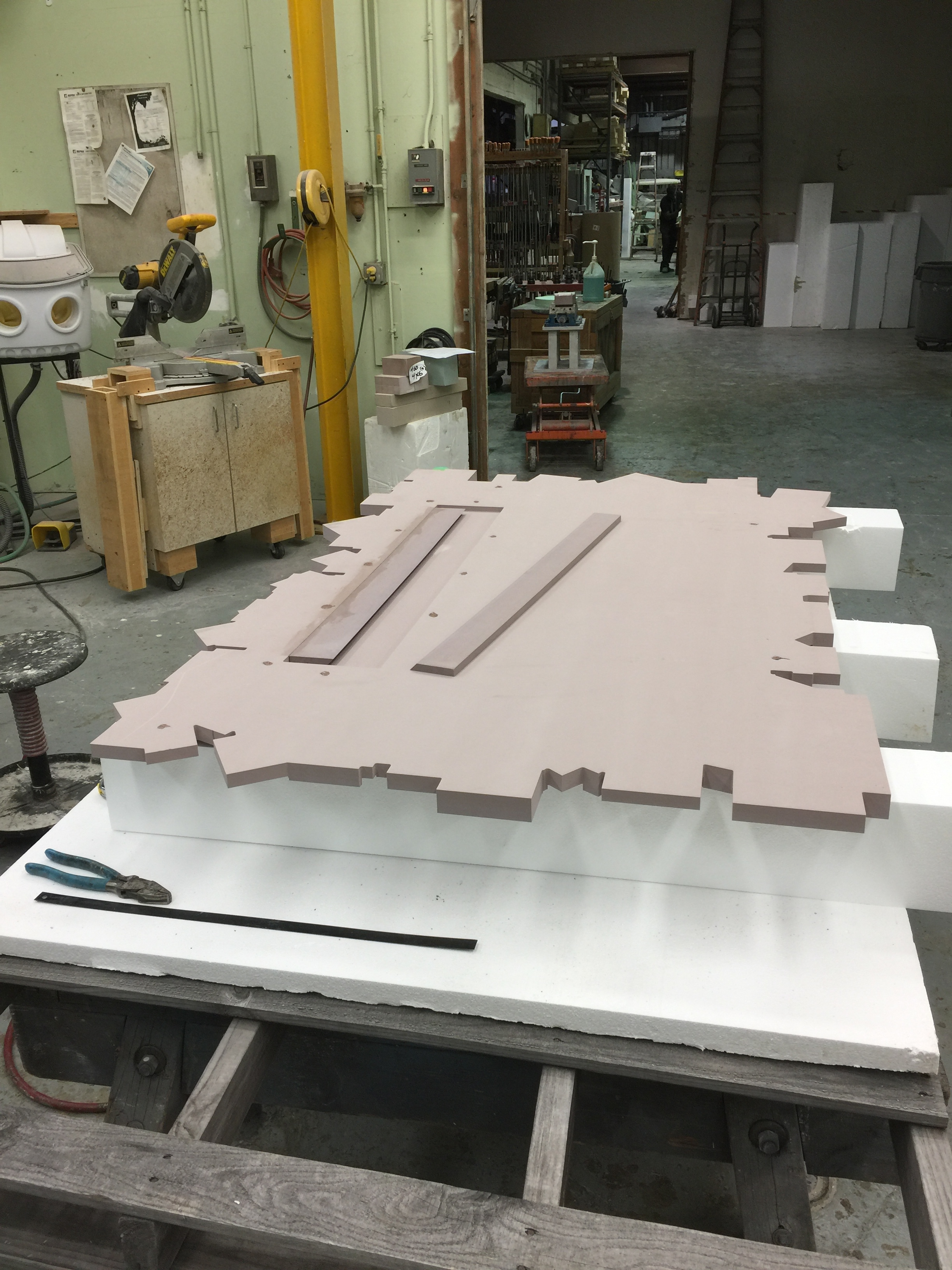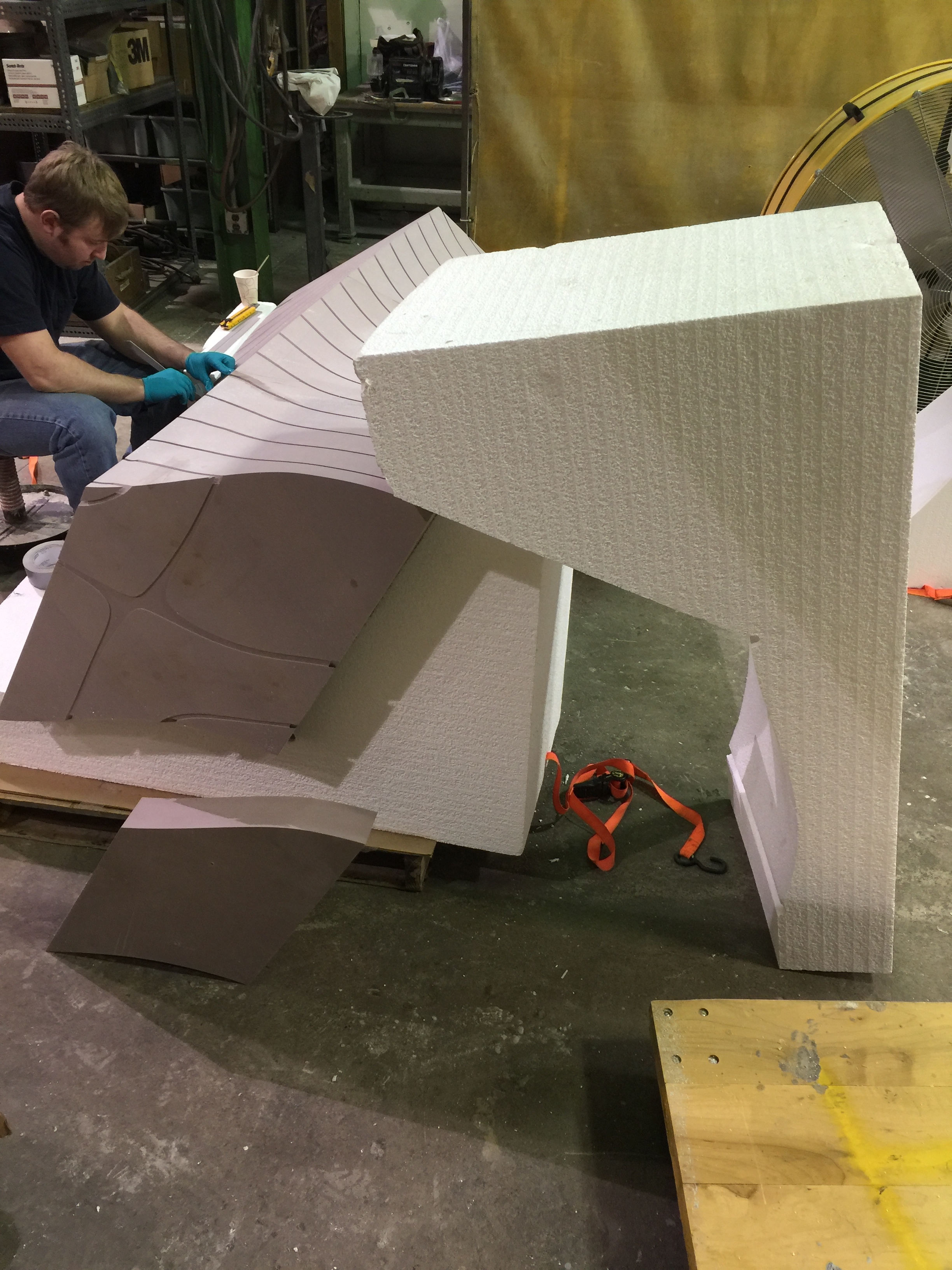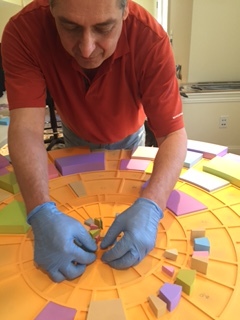Monet looked at his garden and created landscapes.
I look at data and create datascapes.
This is my process.
⬇
The data (left) from an article in a scientific journal was the starting point for the creation of my datascape, Why Me? (right). The original data struck me as a beautiful quantitative visualization of correlating DNA structures in human genes.
I have been studying and making data visualizations since high school, often professionally, but also for fun. I now actively search the web and subscribe to several internet clipping services that expose me to hundreds of new data depictions from the sciences, social sciences, finance and technology every week, a bottomless well of inspiration for my projects.
For the Why Me? project, I experimented with different abstractions of the original data over several weeks. I then roughed-out several small studies and eventually made the large oil painting, below.
With the painting as a guide, I recreated the basic design in a CAD (Computer-Aided-Design) program and started manipulating the 3-dimensional possibilities.
For this project, I used CAD in mostly traditional ways to vary the heights of the component wedges and create a base “tray” that would allow the project to be properly painted and assembled.
CAD has been largely unexplored by artists, but is a virtual candy store when it comes to creative processes. One can quickly manipulate and depict things that would be extremely laborious or impossible to draw by hand. For example, one can instantaneously replace human skin in a figure with tree bark, or with any material, real or imagined. Complex and unique shapes can be constructed with ease and accuracy. One can even forgo drawing altogether and model a design purely by algorithm.
The intricacy and precision of my artworks require that they be produced at mills equipped with CNC (Computer-Numeric-Control) devices, that is, with computer-controlled milling machines. There are very few facilities worldwide with multi-axis milling machines that can accommodate large sculptures like mine and that also have the experience (and patience) necessary to work with artists.
One material I like to work with is high-density resin because it welcomes meticulous carving, takes paint well, is relatively light-weight, and has superior archival qualities; but pieces can also be milled in aluminum, steel, stone and other traditional sculptural materials.
Click below to see a short movie of Blue Blade being milled.
At the mill I can incorporate integrated mounting systems into my pieces (left), as well as design and build customized shipping crates for them (right).
Back at my studio, the final steps are fine-sanding, cleaning, painting, and assembly. I work with a variety of paints including oils, acrylic and latex. Automotive paints can produce a variety of unusual colors, pigment depths, and finishes. Regardless, every component of each piece is hand-painted (there are, for example, over 500 components in Scintillas) using a minimum of nine layers: three each of base-coat, primary color, and protective clear-coat. From start-to-finish a typical piece takes 3-6 months to complete.

